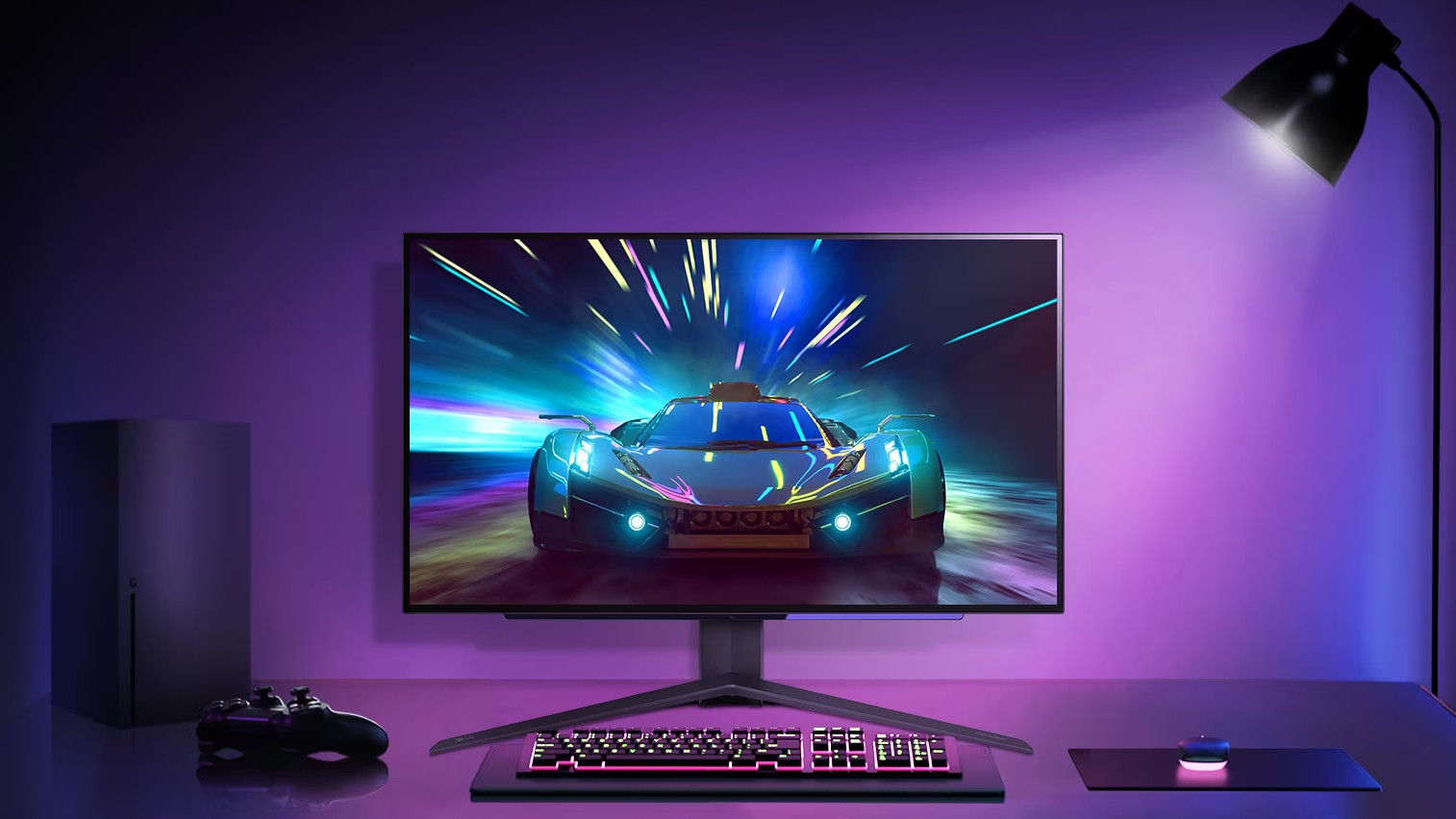LG finally clarifies whether its warranty covers OLED burn-in on gaming monitors – and it’s good news
Image burn-in is covered in two-year warranty – and other monitor makers need to do this, too

Burn-in might still be a lurking worry in the back of the minds of those who buy an OLED monitor (or one of the best OLED TVs), so it’s good to see one manufacturer coming out and clarifying its policy on the matter – and that burn-in is covered with its warranty.
LG Electronics was badgered by The Verge for some months, following a review of one of the firm’s 27-inch OLED gaming monitors. The company has now confirmed that there’s two-year coverage for burn-in on its monitors in the US, with some caveats.
In the review, The Verge’s writer, Sean Hollister, highlighted that the warranty did not cover “burned-in images resulting from improper usage,” and sought clarification as to exactly what that meant.
The Verge has now had a definitive answer from LG, with LG’s head of consumer PR in the US, Christopher De Maria, confirming a two-year burn-in warranty for its OLED gaming display.
That freshly altered warranty applies to those who have already bought an LG 27GR95QE-B, as well as those who buy a display going forward.
The mentioned caveat is that the reworded warranty still says it only covers the monitor if it has experienced “normal and proper use” and that damage (burn-in) resulting from “misuse [or] abuse” is not covered.
That kind of wording is to be expected in a warranty, mind, and a further clarification came from LG’s product marketing director David Park, who told The Verge: “Now, as long as you use the monitor as intended (personal PC monitor) in a residential setting (does not support commercial usage like retail signage display) burn-in is covered.”
Sign up for breaking news, reviews, opinion, top tech deals, and more.
De Maria further adds: “Normal use means the product is used for what it was created to do. In this case that is gaming (professional and casual) as well as desktop computing such as Windows, etc.”
Analysis: Other monitor makers need to get with the program
It seems, then, that when LG talks about abuse, it means scenarios in which the monitor really is outside of the intended usage, such as displaying the same static image for umpteen hours a day in a shop.
Normal desktop usage with Windows (or whatever OS) is fine and covered, even though to some degree, that usage may mean the same images being displayed on the screen (maybe parts of the interface, like the taskbar, if it’s set not to hide itself) for relatively long periods.
While OLED tech has moved on considerably, and burn-in is a less common problem with more modern panels for a variety of reasons, it remains a worry for some folks – so it’s good to see LG clarify this in uncertain terms, and the company gets some kudos points here. Of course, this is as it should be – if you’re selling one of the best gaming monitors to go with a gaming PC, it must be able to handle usage as, well, the desktop PC companion it is. Otherwise, what is the point?
As The Verge notes, though, monitor makers don’t explicitly cover the possibility of burn-in happening. And this is despite the fact that the big panel makers, LG Display and Samsung Display, offer a burn-in warranty to the monitor manufacturers they supply – so you’d expect this to be passed on to the end customer.
LG Electronics is now passing it on, but others are not – The Verge highlights that Acer and Asus don’t, at least not officially. Although we’re told that unofficially, Acer will deal with these issues, as the company’s media relations manager, Erin Davern, told the tech site.
Davern noted: “While burn-in is not considered part of our formal 3-year monitor warranty coverage, in practice, our customer care team has discretion to assist customers with this rare issue and authorize repair services, free-of-charge.”
The Verge is still waiting on a similar clarification from Asus, which is apparently talking to LG Display about the warranty coverage provided to monitor makers. Hopefully, all monitor manufacturers can eventually agree to explicitly cover burn-in, and put buyer’s minds fully at rest, now that LG Electronics has done so.
Darren is a freelancer writing news and features for TechRadar (and occasionally T3) across a broad range of computing topics including CPUs, GPUs, various other hardware, VPNs, antivirus and more. He has written about tech for the best part of three decades, and writes books in his spare time (his debut novel - 'I Know What You Did Last Supper' - was published by Hachette UK in 2013).